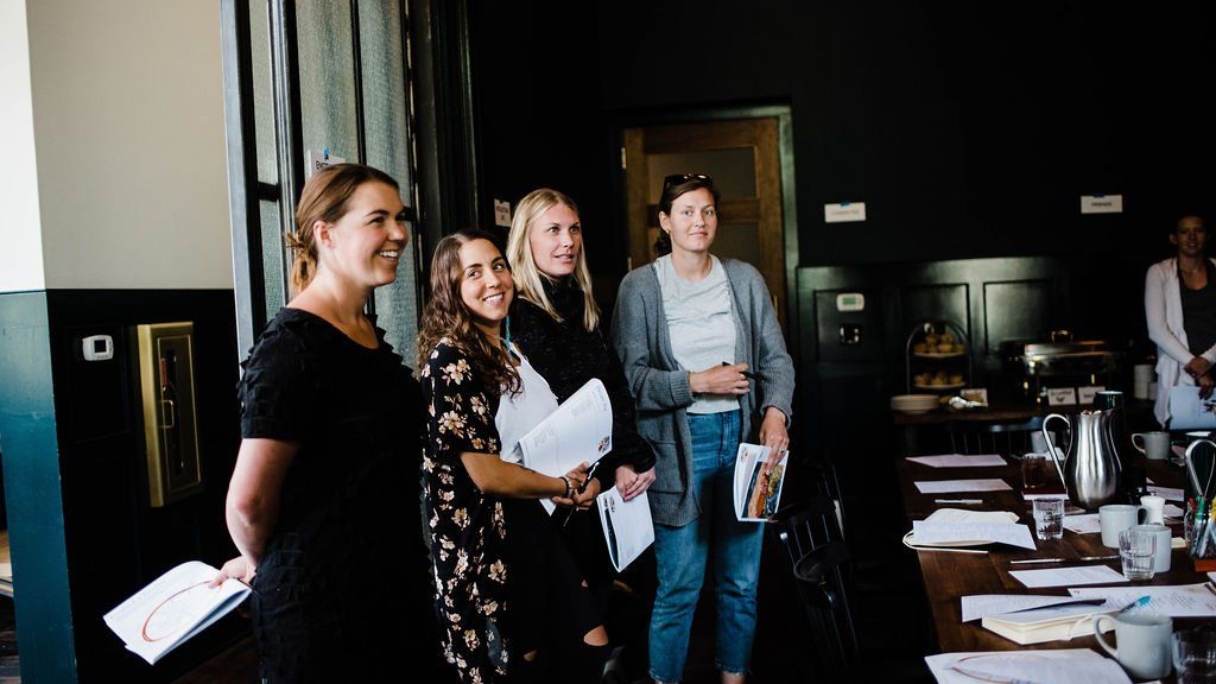Plan the Best Strategy Retreat of Your Career - Part 2: Develop a Straw Man Agenda

If you’ve done your homework and your planning committee has aligned on the KNOW, FEEL, and DO objectives for your strategy retreat, the next step is developing an agenda. If you don’t yet have a macro-level KNOW, FEEL, and DO figured out, go back to that first. Read more about how to do that here.
Open the planning document with your refined KNOW, FELL and DO statements. Below them, make a table with 5 columns and label them with these headings:
Know, Feel, and Do | Lead | Contributors | Time | Activity
Then roll up your sleeves and prepare to get a little dirty. This is where it gets incredibly messy before you clean it up. Think about the journey your participants need to go on over the course of the retreat, and build out a row in your table for each step of that journey. Determine what they need to KNOW, FEEL, and DO first, second, third, and so on. Each row will be its own experience or agenda item, and each should have it’s own distinct purpose. Then, as best as you can, fill out the rest of your table to create your straw man agenda:
- In the LEAD column, identify who is best suited to design, frame, and lead the agenda item. You may discover you’re relying too much on yourself or one other person to lead most of the agenda.
- In the CONTRIBUTORS column, identify the people who will have relevant input to the discussion or activity. Pay attention to whether some of your attendees really only need to participate in a portion of the agenda.
- In the TIME column, put down a best-guess estimate of how long you think it’ll take to achieve your KNOW, FEEL and DO objectives for that item. Don’t be conservative here, you want to see how time may be an issue, so let it run over in your first draft.
- In the ACTIVITY column, add more detail around what you imagine the presenter and attendees will be doing. Here is where most of our clients put “presentation” or “report out” as a default and we’ll talk more about why that can be improved upon in the next article.
For many clients we work with, starting with the KNOW, FEEL, DO journey and putting the agenda items together afterwards can feel a bit backwards. They don’t have a KNOW, FEEL, DO in mind for every step of the retreat. Instead they have a list of presentations that they believe need to get through, and a series of questions they plan to pose to the group and have them discuss. Rather than thinking about the journey of the participants, they’re focused on the mechanics of getting through the checklist of TO DOs. The trouble with this approach is that it doesn’t keep the people at the meeting nor the outcomes as central to the planning and design. In fact, it may often make sense to have the information from the presentations be pre-reads instead, or the questions structured more as brainstorming or prioritization activities.
Once you have a first draft of your straw man agenda down, look it over once more keeping your overall KNOW, FEEL, DO in mind. Evaluate whether the agenda accomplishes what you need it to. Identify what might be missing. Pay attention to how agenda items are weighed relative to each other in terms of time spent, and determine if that weight is appropriate.
Next you want to take this high-level agenda flow, and get creative with it. Once you and your planning committee are aligned on every detail around each component of the agenda, you can start to divide and conquer the individual activities that will achieve your KNOW, FEEL, DO objectives. One way to delegate is to put whoever is supposed to LEAD it in charge of designing and developing it. That doesn’t always make sense, but it can be a good place to start.
In our work helping clients design their strategy retreats, we've come across plenty of draft agendas. Some are better than others. Download this file for two draft agendas that we've marked up with comments on their strengths and opportunities.
Up next, check out our article on designing activities for engagement and buy-in.
This article is Part 2 of a 4-part series: Plan the Best Strategy Retreat of Your Career.
Here is the full set of articles from the series:
Recent Posts





